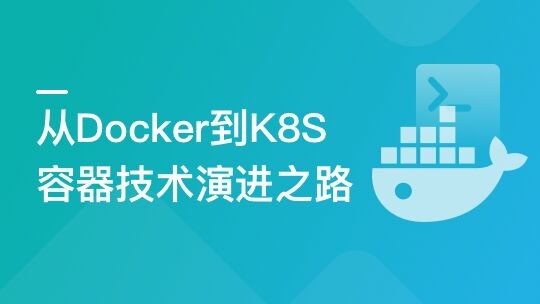上一篇文章中写道了docker的底层是使用runC来管理镜像的创建,启动,监控及删除的,这次就来看一下如何使用runC工具来管理镜像的生命周期
runC的使用非常简单,首先去github下载已经编译好的二进制文件(写文章的时候版本是1.0-rc6),文件名一般为runc.amd64,直接拷贝进usr/bin目录即可。先执行一下runc命令,有如下显示
NAME:
runc - Open Container Initiative runtime
runc is a command line client for running applications packaged according to
the Open Container Initiative (OCI) format and is a compliant implementation of the
Open Container Initiative specification.
runc integrates well with existing process supervisors to provide a production
container runtime environment for applications. It can be used with your
existing process monitoring tools and the container will be spawned as a
direct child of the process supervisor.
Containers are configured using bundles. A bundle for a container is a directory
that includes a specification file named "config.json" and a root filesystem.
The root filesystem contains the contents of the container.
To start a new instance of a container: # runc run [ -b bundle ] <container-id>Where "<container-id>" is your name for the instance of the container that you
are starting. The name you provide for the container instance must be unique on
your host. Providing the bundle directory using "-b" is optional. The default
value for "bundle" is the current directory.
USAGE:
runc [global options] command [command options] [arguments...]
VERSION:
1.0.0-rc6
spec: 1.0.1-dev
COMMANDS:
checkpoint checkpoint a running container
create create a container
delete delete any resources held by the container often used with detached container
events display container events such as OOM notifications, cpu, memory, and IO usage statistics exec execute new process inside the container
init initialize the namespaces and launch the process (do not call it outside of runc) kill kill sends the specified signal (default: SIGTERM) to the container's init process
list lists containers started by runc with the given root
pause pause suspends all processes inside the container
ps ps displays the processes running inside a container
restore restore a container from a previous checkpoint
resume resumes all processes that have been previously paused
run create and run a container
spec create a new specification file
start executes the user defined process in a created container
state output the state of a container
update update container resource constraints
help, h Shows a list of commands or help for one command
GLOBAL OPTIONS:
--debug enable debug output for logging
--log value set the log file path where internal debug information is written (default: "/dev/null")
--log-format value set the format used by logs ('text' (default), or 'json') (default: "text")
--root value root directory for storage of container state (this should be located in tmpfs) (default: "/run/runc")
--criu value path to the criu binary used for checkpoint and restore (default: "criu")
--systemd-cgroup enable systemd cgroup support, expects cgroupsPath to be of form "slice:prefix:name" for e.g. "system.slice:runc:434234"
--rootless value ignore cgroup permission errors ('true', 'false', or 'auto') (default: "auto")
--help, -h show help
--version, -v print the version简单的说,runC是一个命令行工具,用来运行按照OCI标准格式打包过的应用,容器使用bundle进行配置。bundle的概念,简单来说就是一个目录,目录里包含一个配置文件config.son和一个root文件系统(rootfs目录),使用命令
# runc run [ -b bundle ] <container-id>
来启动一个容器,其中-b是可选项,用来指定bundle的位置(默认为当前目录),注意container-id必须在host上唯一。
因为需要制作root filesystem,所以还需要安装好docker并设置好镜像仓库(这步不是必须的,理论上只要你制作出一个符合OCI规范的filesystem都可以,只是自己弄比较麻烦)
准备工作都完成后,接下来就可以开始测试了
# create the top most bundle directorymkdir /mycontainercd /mycontainer# create the rootfs directorymkdir rootfs# export busybox via Docker into the rootfs directorydocker export $(docker create busybox) | tar -C rootfs -xvf -
这几步是先创建容器目录,再创建一个名字叫rootfs的目录,之后使用一个docker的镜像busybox(一个轻量级的linux工具集)来制作root filesystem(docker镜像都是符合OCI格式规范的)。完成后rootfs目录下会有如下文件
[root@localhost rootfs]# ls -l总用量 16 drwxr-xr-x. 2 root root 12288 1月 1 02:16 bin drwxr-xr-x. 4 root root 43 1月 11 09:20 dev drwxr-xr-x. 3 root root 139 1月 11 09:20 etc drwxr-xr-x. 2 nfsnobody nfsnobody 6 1月 1 02:16 home drwxr-xr-x. 2 root root 6 1月 11 09:20 proc drwx------. 2 root root 6 1月 1 02:16 root drwxr-xr-x. 2 root root 6 1月 11 09:20 sys drwxrwxrwt. 2 root root 6 1月 1 02:16 tmp drwxr-xr-x. 3 root root 18 1月 1 02:16 usr drwxr-xr-x. 4 root root 30 1月 1 02:16 var
有了rootfs之后,我们就可以执行如下命令
runc spec
来创建一个config.json文件,这个文件是一个标准的OCI格式的文件,内容如下
{ "ociVersion": "1.0.1-dev", "process": { "terminal": true, "user": { "uid": 0, "gid": 0
}, "args": [ "sh"
], "env": [ "PATH=/usr/local/sbin:/usr/local/bin:/usr/sbin:/usr/bin:/sbin:/bin", "TERM=xterm"
], "cwd": "/", "capabilities": { "bounding": [ "CAP_AUDIT_WRITE", "CAP_KILL", "CAP_NET_BIND_SERVICE"
], "effective": [ "CAP_AUDIT_WRITE", "CAP_KILL", "CAP_NET_BIND_SERVICE"
], "inheritable": [ "CAP_AUDIT_WRITE", "CAP_KILL", "CAP_NET_BIND_SERVICE"
], "permitted": [ "CAP_AUDIT_WRITE", "CAP_KILL", "CAP_NET_BIND_SERVICE"
], "ambient": [ "CAP_AUDIT_WRITE", "CAP_KILL", "CAP_NET_BIND_SERVICE"
]
}, "rlimits": [
{ "type": "RLIMIT_NOFILE", "hard": 1024, "soft": 1024
}
], "noNewPrivileges": true
}, "root": { "path": "rootfs", "readonly": true
}, "hostname": "runc", "mounts": [
{ "destination": "/proc", "type": "proc", "source": "proc"
},
{ "destination": "/dev", "type": "tmpfs", "source": "tmpfs", "options": [ "nosuid", "strictatime", "mode=755", "size=65536k"
]
},
{ "destination": "/dev/pts", "type": "devpts", "source": "devpts", "options": [ "nosuid", "noexec", "newinstance", "ptmxmode=0666", "mode=0620", "gid=5"
]
},
{ "destination": "/dev/shm", "type": "tmpfs", "source": "shm", "options": [ "nosuid", "noexec", "nodev", "mode=1777", "size=65536k"
]
},
{ "destination": "/dev/mqueue", "type": "mqueue", "source": "mqueue", "options": [ "nosuid", "noexec", "nodev"
]
},
{ "destination": "/sys", "type": "sysfs", "source": "sysfs", "options": [ "nosuid", "noexec", "nodev", "ro"
]
},
{ "destination": "/sys/fs/cgroup", "type": "cgroup", "source": "cgroup", "options": [ "nosuid", "noexec", "nodev", "relatime", "ro"
]
}
], "linux": { "resources": { "devices": [
{ "allow": false, "access": "rwm"
}
]
}, "namespaces": [
{ "type": "pid"
},
{ "type": "network"
},
{ "type": "ipc"
},
{ "type": "uts"
},
{ "type": "mount"
}
], "maskedPaths": [ "/proc/kcore", "/proc/latency_stats", "/proc/timer_list", "/proc/timer_stats", "/proc/sched_debug", "/sys/firmware", "/proc/scsi"
], "readonlyPaths": [ "/proc/asound", "/proc/bus", "/proc/fs", "/proc/irq", "/proc/sys", "/proc/sysrq-trigger"
]
}
}这边再说一下OCI规范,援引一段OCI官网的说明
Established in June 2015 by Docker and other leaders in the container industry, the OCI currently contains two specifications: the Runtime Specification (runtime-spec) and the Image Specification (image-spec). The Runtime Specification outlines how to run a “filesystem bundle” that is unpacked on disk. At a high-level an OCI implementation would download an OCI Image then unpack that image into an OCI Runtime filesystem bundle. At this point the OCI Runtime Bundle would be run by an OCI Runtime.
简单的说,OCI有两个规范,一个是容器运行时规范runtime-spec,一个是镜像格式规范image-spec。一个镜像,简单来说就是一个打包好的符合OCI规范的filesystem bundule。而bundile的话,前面介绍过,包含一个配置文件config.json和一个rootfs目录。
现在rootfs和config.json都有了,我们可以创建容器了,执行
runc run mycontainerid
创建容器,成功后会自动进入容器
这时候我们执行ps一下,可以看到
/ # psPID USER TIME COMMAND 1 root 0:00 sh 7 root 0:00 ps
可以看到这个容器里面的1号进程就是sh那个进程,看不到其他进程,容器启动试验成功。
现在我们可以做容器的整个生命周期管理了
# run as rootcd /mycontainer runc create mycontainerid# view the container is created and in the "created" staterunc list# start the process inside the containerrunc start mycontainerid# after 5 seconds view that the container has exited and is now in the stopped staterunc list# now delete the containerrunc delete mycontainerid
注意在执行runc create mycontainerid命令时,会报错
cannot allocate tty if runc will detach without setting console socket
这是由于在config.json文件中的配置"terminal": true,这个默认是true,即以终端方式启动,需要改成false。
作者:暴走的初号机
链接:https://www.jianshu.com/p/d2a46983ad83

 随时随地看视频
随时随地看视频




